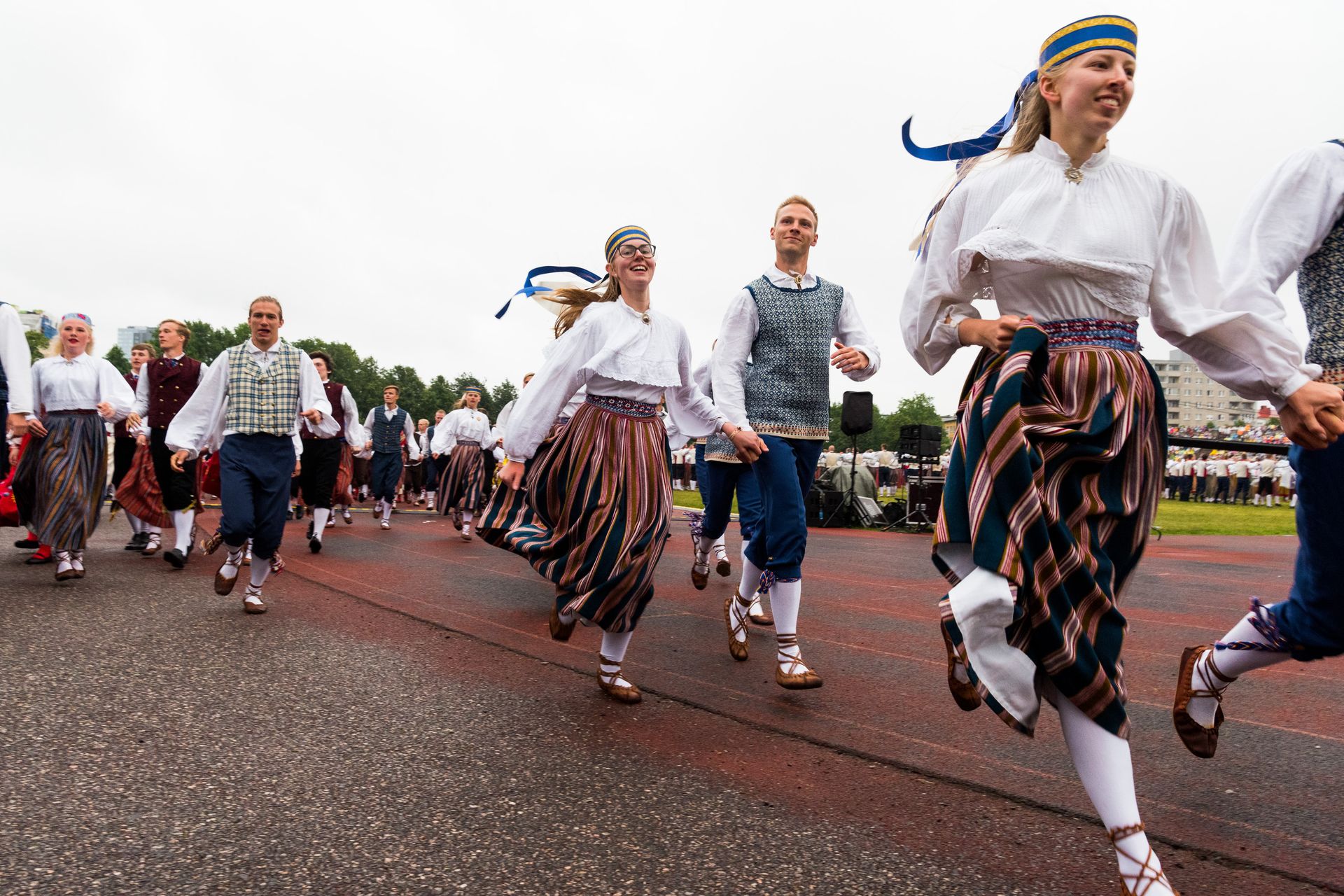
National costumes: A colorful part of Estonian identity
A national costume is a prized possession of many Estonians. Each parish has a unique design, often featuring elaborate handiwork.
Some traditions never go out of style!
In Estonia, wearing a folk costume is still one way to be fashionable.
Most Estonian folk costumes have similar components: linen shirts, wool skirts, often striped, breeches tied with garters for men, knit socks, gloves, sweaters, bonnets, fine silver brooches and jewelry, as well as a variety of footwear from sandals to boots and shoes. But the style, color, and designs varied from parish to parish and often indicated a person's social status, such as whether they were married or single.
During the Soviet occupation, folk costumes were not worn because they symbolized national pride, but after independence, wearing folk costumes became popular once again. Today, Estonians wear beautiful traditional costumes for festive occasions, national holidays, graduation ceremonies, and all types of cultural festivals, including the Song and Dance Celebration.
The most famous are the folk costumes from Setomaa, Kihnu Island, and Mulgi County. On Kihnu Island, in particular, this clothing is often worn on a daily basis. The survival of these costumes is one of the reasons why Kihnu Island traditions have been added to the UNESCO List of Intangible Cultural Heritage.
Traditional clothing tells a tale
Estonian folk costumes stand out because of their variety.
Folk costumes are divided into three types:
- Simple, everyday work clothes with no special decorations
- Casual clothing for less formal events that were less formal
- Elaborate ceremonial clothing, worn on truly important occasions — these items are treasured and passed down from generation to generation.
Modern folk costumes can largely be traced back to the 19th century, when Estonia had 107 different parishes, as well as regions like Setomaa, Old Believer villages, Kihnu Island, and the Coastal Swedish communities.
Each Estonian parish or region has its own special folk costume, including a unique sequence of colors and stripes woven into the women's wool skirts.
In South Estonia, apart from Setomaa and Mulgimaa, the costumes are generally made in calmer tones, and the bonnets are similar to the cotton ones worn in Latvia. Near Pärnu and along the Baltic Coast, the wool skirts are more colorful, and the bonnets have long ribbons and silver coin ornaments.
In Northeastern Estonia, many folk costumes include special shirts with a wide hem decorated with colorful embroidery, in addition to beautiful belts tied around the waist in several layers with the ends tucked in. The attire of married women is complemented by luxurious bonnets and delicate aprons.
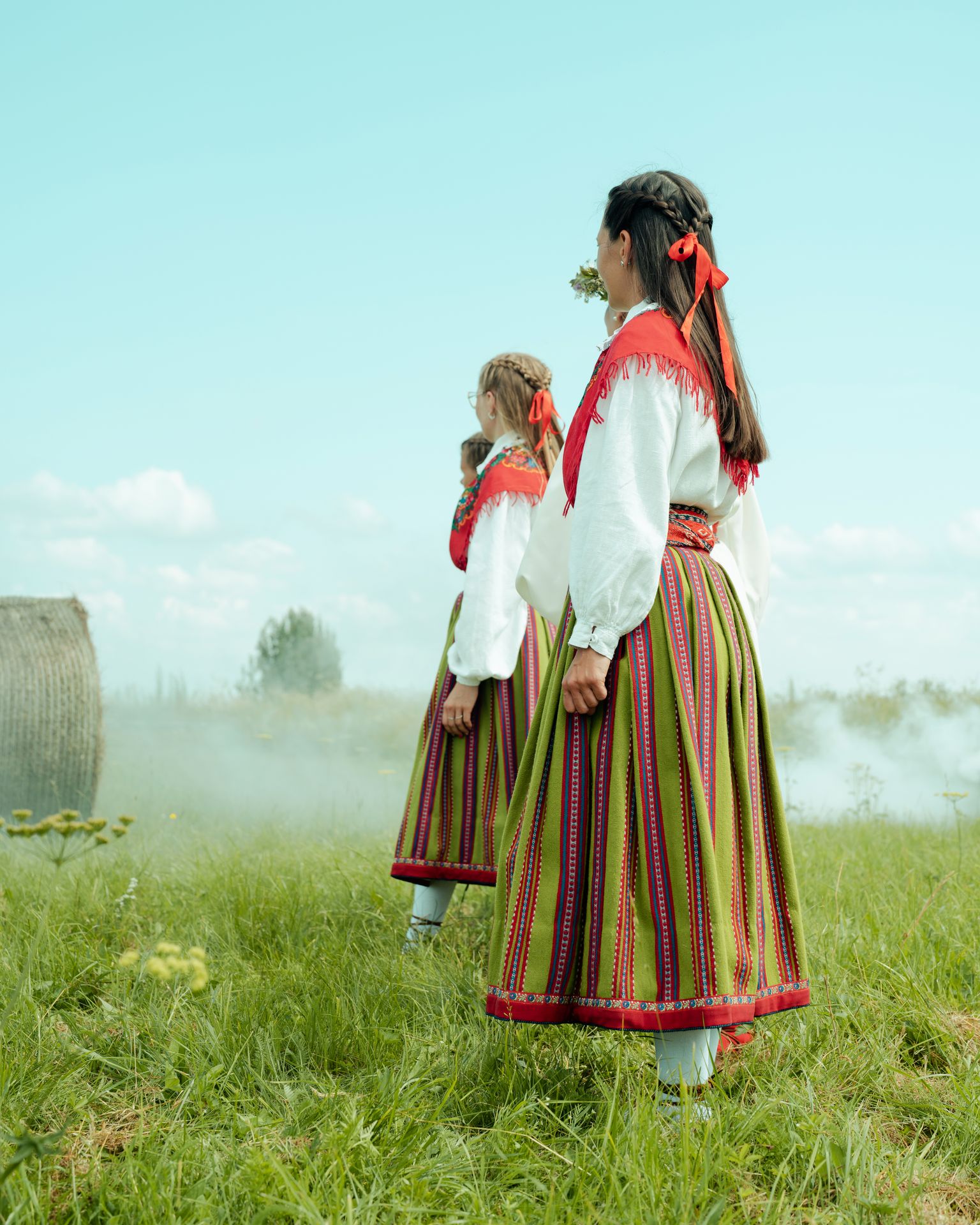
Photo author: Leon Metsallik
The folk costumes of Kihnu Island
Ancient patterns, modern pride
Many of Kihnu's 700 inhabitants still wear full or partial national costumes every day. And often you'll see women sitting on their doorsteps, knitting. You'll hear knitting needles clacking year-round because when you live on a windy island or spend time at sea, it's important to stay warm! Traditional Kihnu mittens and men's sweaters, known as troi, have intricate black and white patterns. Nowadays, you can find beautiful wool mittens in the island's handicraft stores. Buying knitwear from local artisans is one way to keep traditions alive and support the island's economy.
A Kihnu woman weaves about 40 colorful striped skirts, known as körts, in her lifetime. The red kört is reserved for the younger women. Once a woman gets married, her skirt has dark stripes, as she mourns the end of her single life. Widows wear black stripes. After about six months, she'll switch to a skirt with blue stripes; the number of dark stripes indicates how long ago her husband passed away.
Married women also wear a patterned apron over their skirt; it's bad luck to forget to put it on. Scarves and aprons are sewn from fabric that sailors used to bring back to the island from distant countries overseas. Now, the fabric still comes from afar, but it's just ordered online and sent by post.

Photo author: Priidu Saart

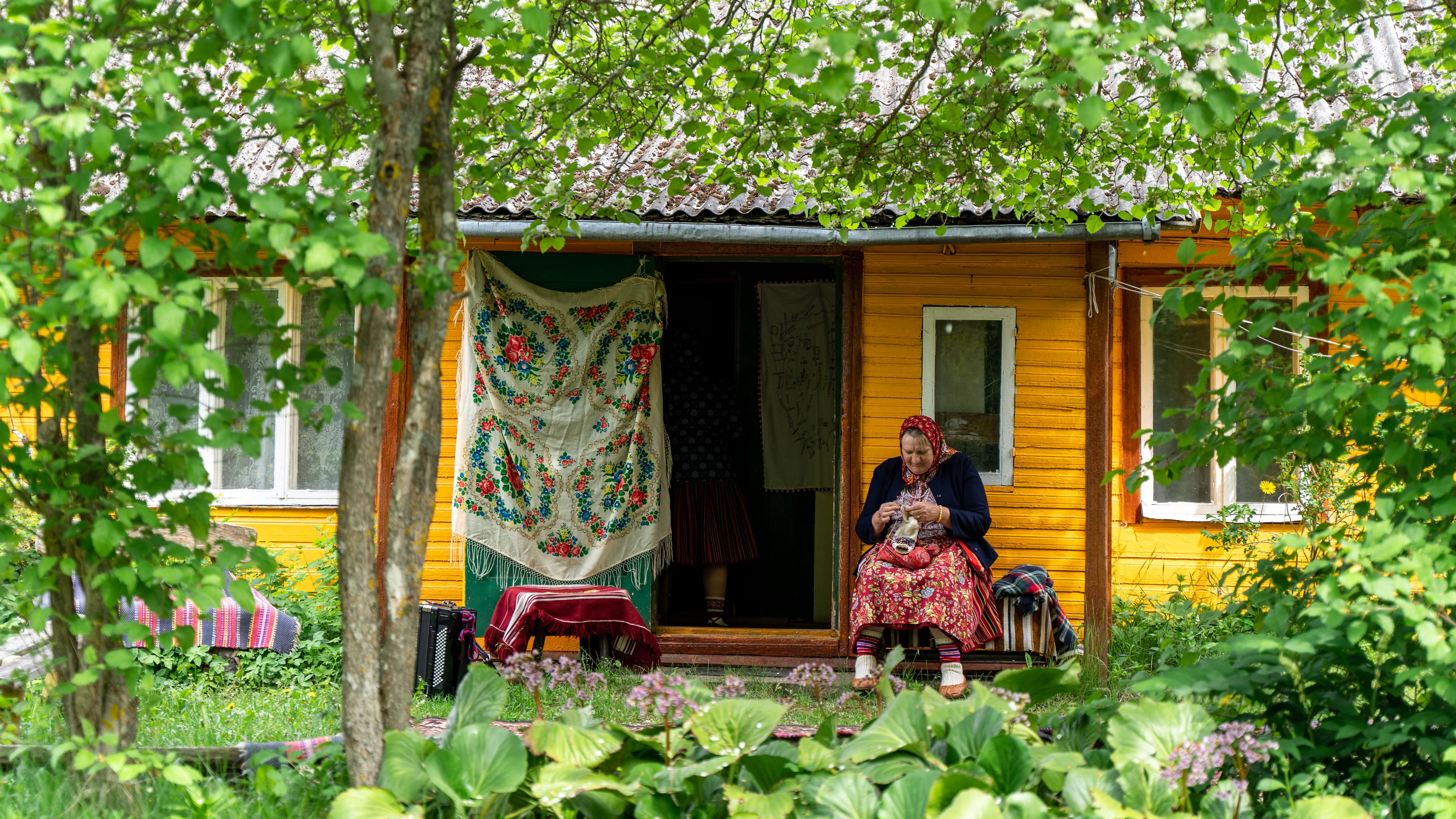
Photo author: Hans Markus Antson
Setomaa's traditional clothes
It's said you can hear a Seto woman before you see her.
At a time when the rest of Estonia fell under the sphere of influence of the Baltic German nobility, the Setos were under the jurisdiction of the Pechora Monastery, so everything was different in this far corner of Estonia. The Setos are Orthodox Christians, with their own dialect and cuisine, and, of course, their national costumes are different.
Seto clothing indicated the wearer's social status, indicating age, social and economic status. The main colors of Seto folk costumes are white and red. The red protects against illness and the evil eye. Like many Estonian folk costumes, traditional Seto clothes are handmade from start to finish. Seto people will proudly wear their costumes for religious celebrations and community events, like Seto Kingdom Day.
Seto women are known for their striking silver jewelery, consisting of a large brooch worn over their chest to protect them from the evil eye and necklaces made from silver coins and twisted silver ropes. The tinkling sound of the coins announces a Seto woman's arrival even before you see her.
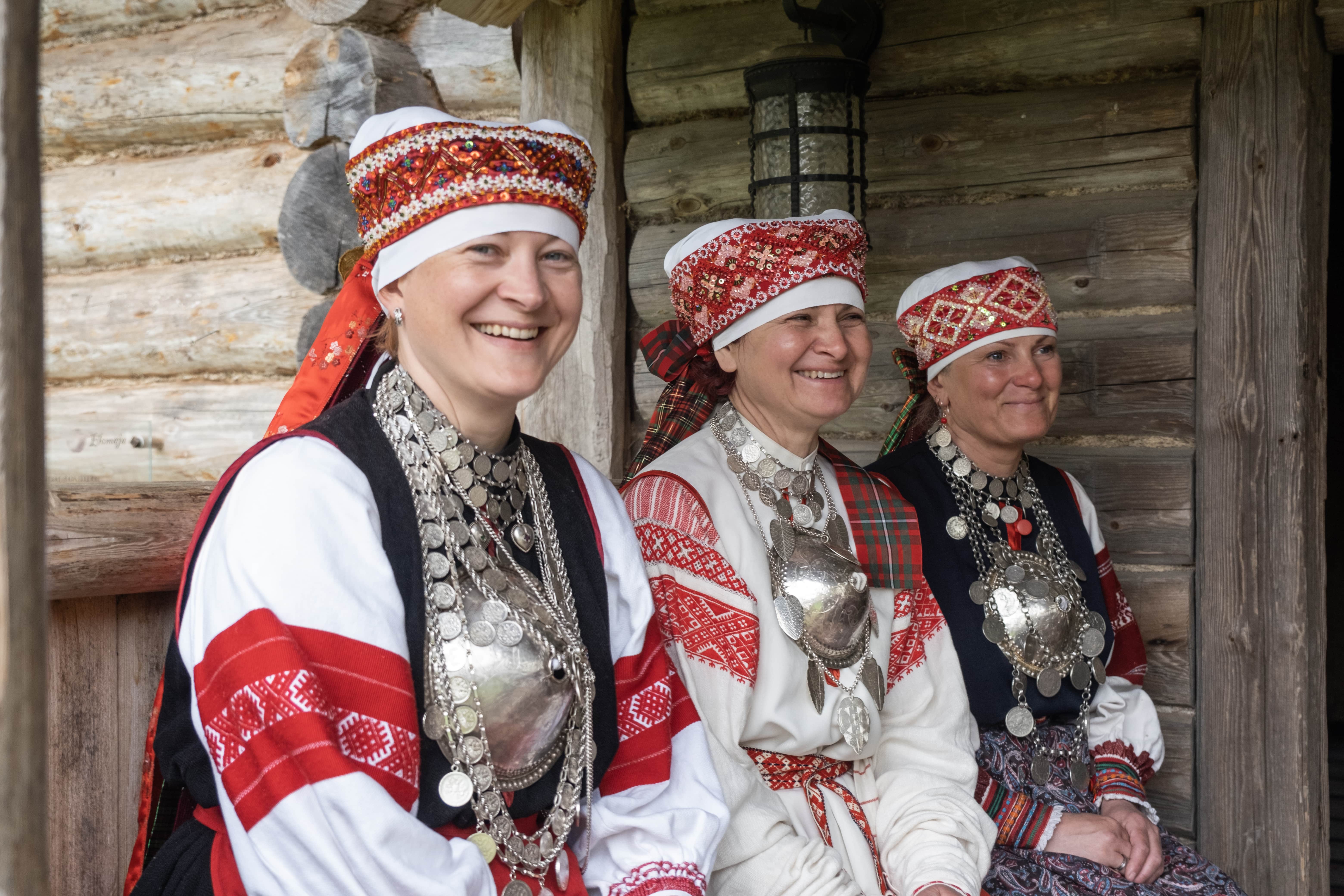
One of Estonia's most famous folk costumes
The black coats of Mulgimaa!
The iconic mulgi wool coat gained special popularity thanks to Toomas Hendrik Ilves, the former President of Estonia.
In Mulgi County, both women and men wore coats, while in other parts of Estonia, women mostly wore jackets.
The mulgi coat is black. In the past, to obtain black dye, brown sheep's wool or yarn was soaked in iron-rich water from nearby bogs. In Halliste Parish, the women's coat has a gray or brown collar, as the collar of men's coats was blue. Wealthier individuals had the coat and sleeves lined with expensive, red, store-bought cloth. The coats were decorated with a red ribbon twisted into a loop pattern.
It was popular for the women of Mulgimaa parishes to use a shawl which wrapped around the shoulders and upper body like a long piece of cloth, though not many examples remain outside of museum collections. They were made of white linen fabric and embroidered with colored thread. The main colors were blue, red, yellow, and green. Red was obtained from madder root, while yellow was made with birch leaves.
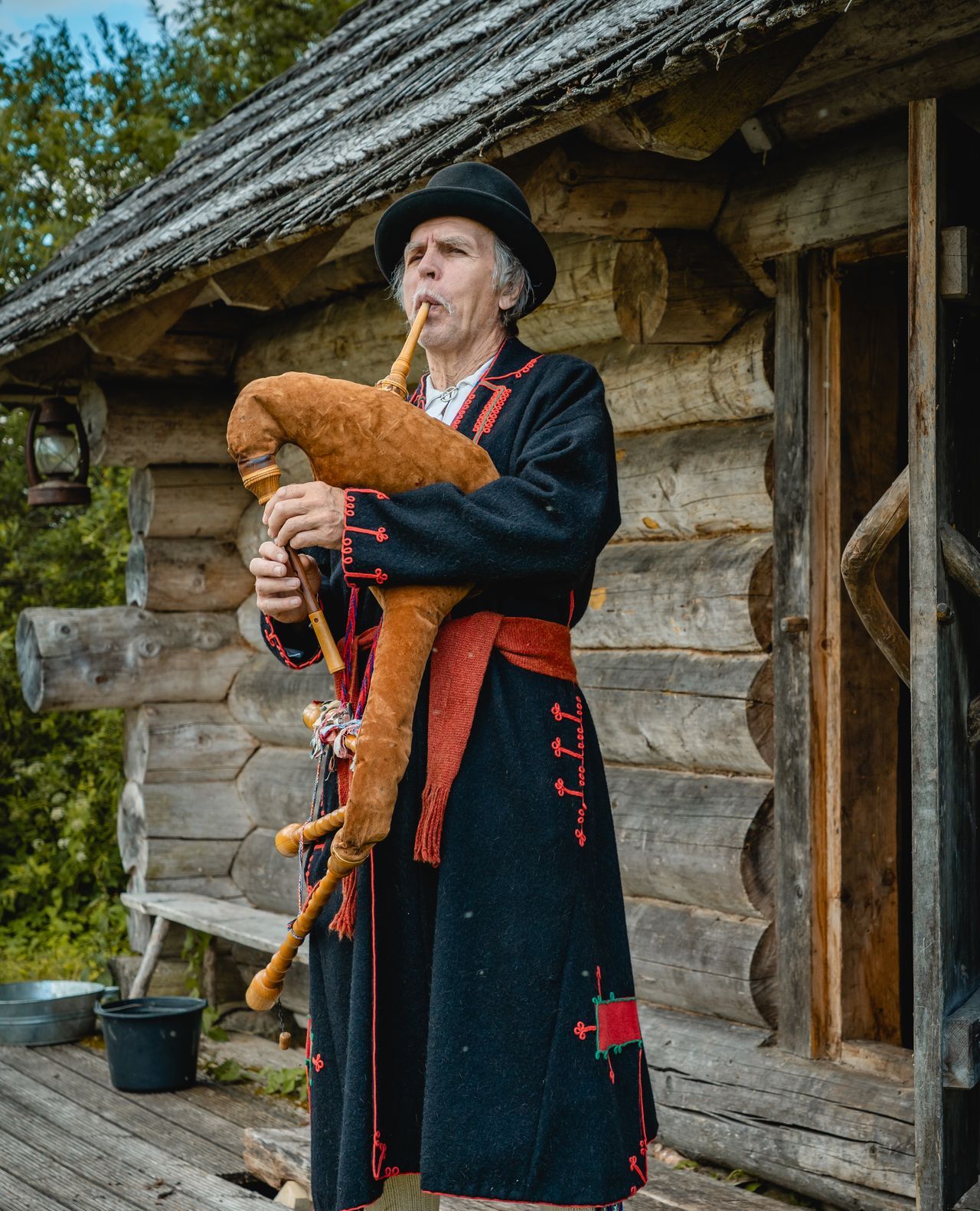
Photo author: Visit Viljandi
You can learn about Estonia's national costumes in museums around the country

Want to see Estonian folk costumes up close?
Attend a special event, celebration, fair, or exhibition, or plan a visit during the UNESCO-listed Song & Dance Celebration.
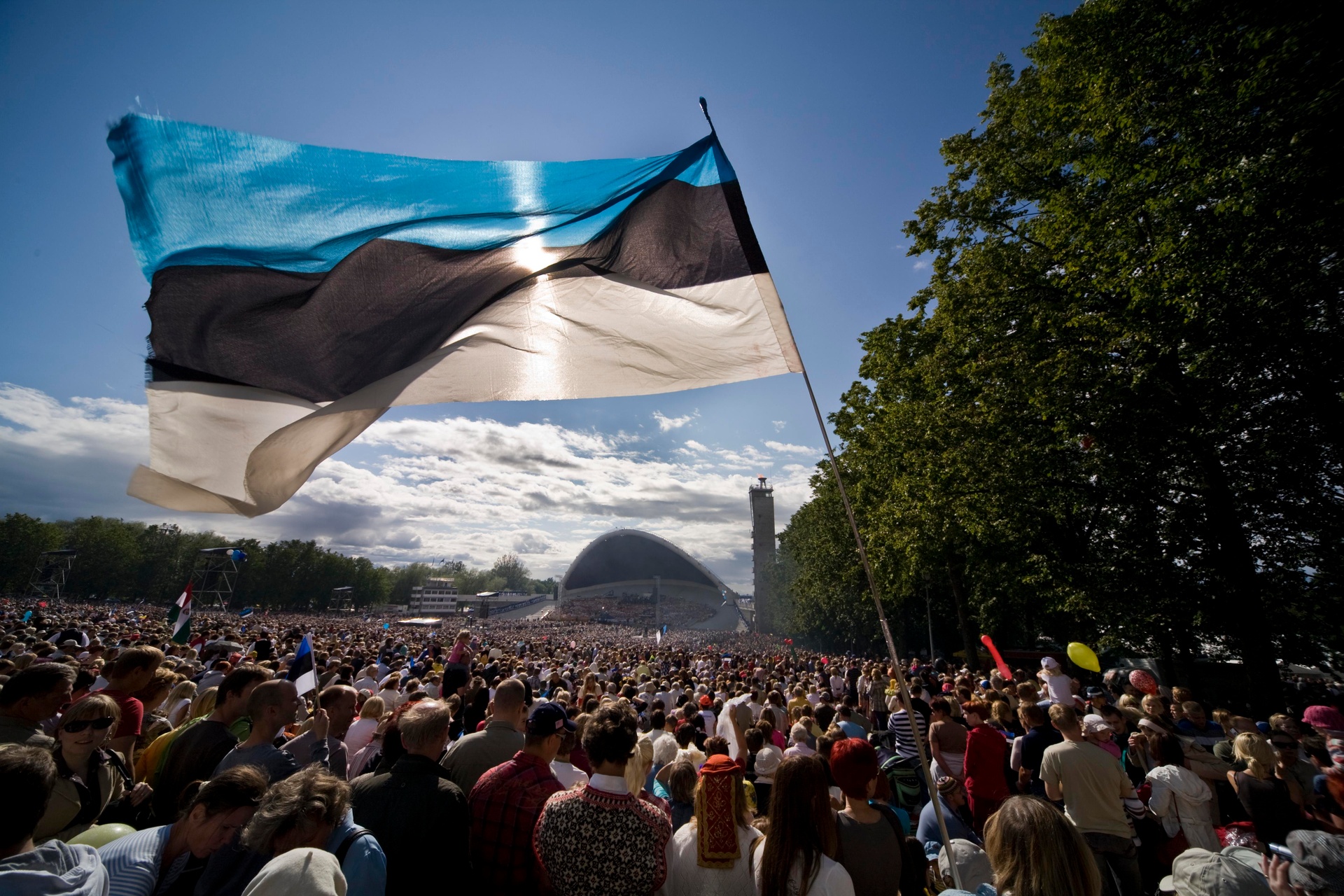
Get inspired
Last updated
10.07.2025